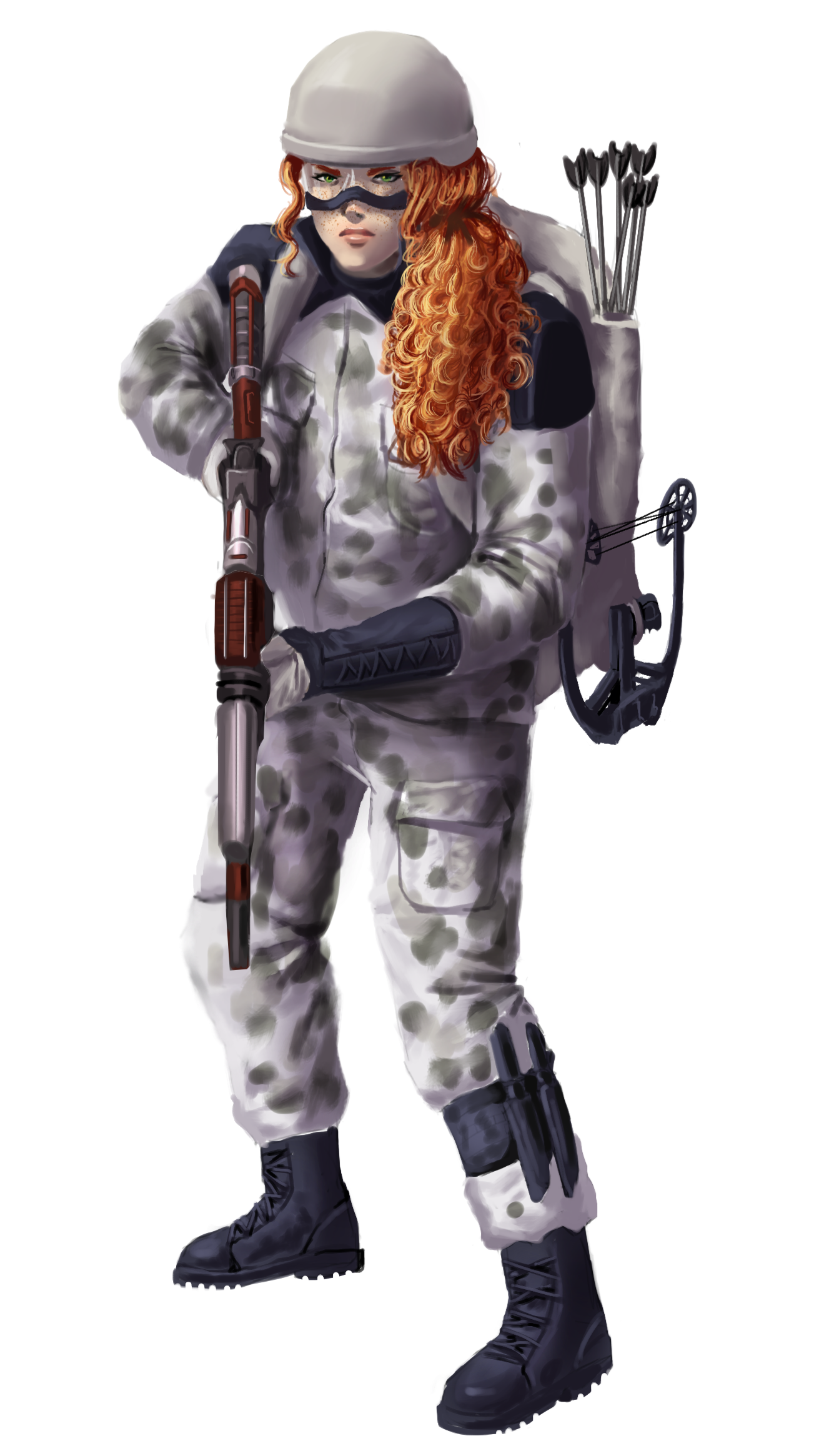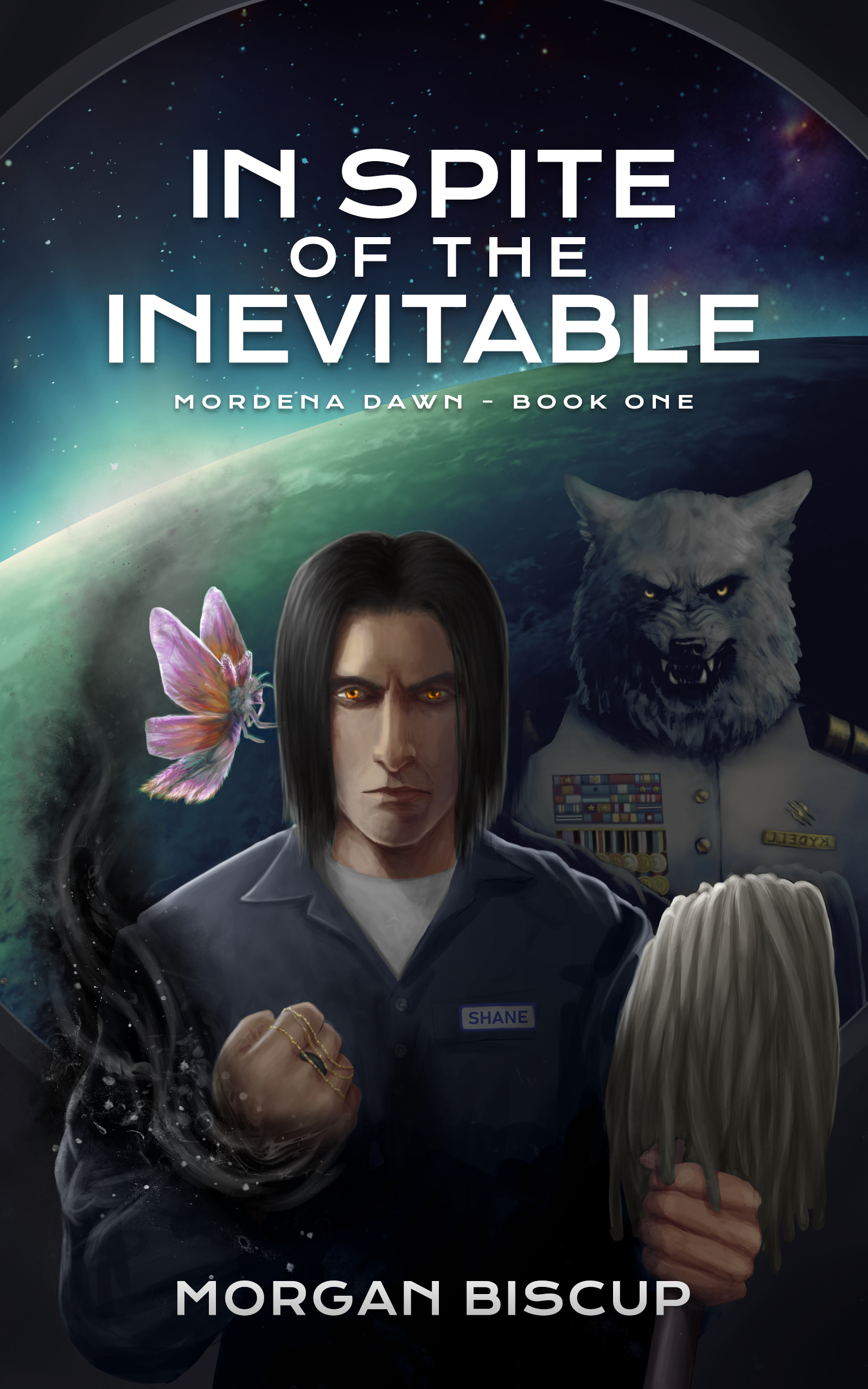human
The least magically-inclined of all sophonts, humans have refused to let this weakness become their legacy, instead developing their own strengths through stubborn persistence and lazy creativity. Today humans are known for their tenacity and endurance, creating their own solutions as needed to engage with the rest of Vazdimet on equal footing.
Basic Information
Anatomy
Humans possess four primary limbs - two arms and two legs - with no tail. They walk upright, as with most sophonts.
Unlike canids and katanoji, the majority of a human's hair is grown on the top, back, and sides of their head, with body hair elsewhere remaining fairly short and sparse, although still present in reduced quantities.
Dietary Needs and Habits
Humans are true omnivores, requiring either a fully balance diet of plant and animal matter, or a careful dietary plan to ensure they consume all required nutrients. Those accustomed to extended travel within the Void often consume supplementary nutrient packets to guarantee they maintain their required nutritional intake.
Their dietary needs are quite similar to those of dracoling.
Additional Information
Perception and Sensory Capabilities
Sight, Smell, and Hearing
A human's sense of sight and smell are less developed than that of the katanoji, canids, and fae, although about equal to that of dracoling. Their sense of hearing is the weakest of all sophonts, although better than that of dracoling whi have not yet mastered their Anemancy.Taste
The humans' omnivorous diet has resulted in the largest range of taste bud receptors across all sophonts, including sweet, sour, salty, bitter, and umami. Those studying humans' remarkable sense of taste have also reported the discovery of multiple other suspected taste receptors including those for sending hot or cold tasting foods, Calcium-rich foots, fat-rich foods, and other niche flavors, although these have not been confirmed. Humans also possess more taste buds than the other sophonts, with receptors located not only in their tongues but also the roofs of their mouths and even their esophagus. These receptors are replaced every ten to fourteen days their entire lives, allowing them to recover quickly even when eating hot or spicy foods. Studies on dracoling have yielded similar results, although the humans' thicker-skinned cousins seem to possess fewer taste buds on average, allowing them to experience the same range of flavors but at a slightly lesser level of intensity. Researchers theorize this may be related to the dracoling's suppressed sense of touch, resulting in an evolutionary attempt to shield them from other strong sensations.Touch
Humans have proven the most sensitive to touch of all sophonts, courtesy of their thing and fully exposed skin. Surprisingly, while this trait has been linked to their universal preferences for wearing clothing in public, it has not resulted in humans as a species withdrawing from the touch of others, but rather the opposite. Humans crave touch in their personal relationships, the physical sensations seeming to produce a calming, grounding effect. Scientific studies have linked touch from trusted friends and loved ones to the release of hormones related to happiness, relaxation, and a reduction in depression. Additionally, their propensity to touch those they care about seems to have a similar effect on their loved ones, even of different sophont species. The humans' tendency to tinker and build also seems to play directly into this improved sense of touch, the detailed feedback from their fingertips allowing for skilled adjustments to their projects at any size and scale. This effect is muted when donning gloves, although less so than for other sophonts.Magic
The least Attuned of all the sophonts, humans have learned to live with magic through sheer persistence and force of will. Some, like the large human population within the Space Defense Legion, have put their efforts into more mundane technological advances in an effort to keep pace with their more magically-inclined neighbors. Others have embraced magic, stretching their Imperium production through persistent exercises while relying on a creative use of the spells and tools availablw to them. In all cases, humans as a species have accepted their disadvantages in the realm of magic without allowing it to slow them down from engaging with society on equal footing.Civilization and Culture
Common Dress Code
Unlike the furred katanoji and canids, the thick-skinned dracoling, and the small but armored fae, human skin is fairly thin and openly exposed to the elements unless protected by other means. Many researchers cite these facts when attempting to determine why, as a whole, humans are more prone to prefer clothing than any other sophont.
As with most things, clothing styles do vary widely depending upon culture, ethnicity, and climate, reaffirming that while the preference for clothing seems to remain species-wide, it is still widely influenced by each human's surroundings, both physically and culturally.
A katanoji researcher once hypothesized that humans must simply feel safer in clothing, much like how a katanoj would feel exposed without fur or claws, with the requirements for fulfilling that need for safety varying depending upon one's upbringing. This theory remains the most prevalent and widely accepted to this day.
Interspecies Relations and Assumptions
While humans are the most magically disadvantaged of all sophonts, they have worked hard to maintain their standing within society as a whole, resulting in widespread recognition for their tenacity, creativity, and physical endurance. Unable to rely on their genetics alone, humans are a reliable force behind the technological progress of the universe, often inventing or adapting strange devices and magic spells to suit their unique needs, rather than adjusting themselves to suit the expected way of things.
Many have learned to underestimate human ingenuity at their peril, and have taken those lessons to heart.
Humans, for their part, have learned a healthy amount of respect for their fellow sophonts. This has made them useful in cross-species teams, allowing a more objective assignment of tasks geared toward each member's strengths to the whole, with human team members adjusting and inventing to fill any gaps.

Caroline Cartwright by Astron
Scientific Name
Homo sapiens sapiens
Lifespan
140 years
Average Height
5ft to 7ft
Body Tint, Colouring and Marking
Human skin tones are varied in color, from rich, dark browns to pale ivories and everything in between.
Unlike the other sophonts, human skin pigmentation is also affected by their recent sun exposure, with their genetic coloration shifting lighter with an absence of sun, and darker with prolonged time under its rays. Too much unprotected time under the sun can even lead to skin damage, a much rarer occurrence for the other sophonts.
Hair colors range from black and brown to red and blonde, with most including an assortment of these basic colors in varying degrees, resulting in more depth and variation from these seemingly limited options. As humans age their hair may also take on strands of white, silver, or gray.
Eyes are most often brown, blue, or occasionally green, although as with human hair a surprising variety of shades and configurations are present despite the color limitations.
Related Organizations

Razick Kane by Astron




Comments